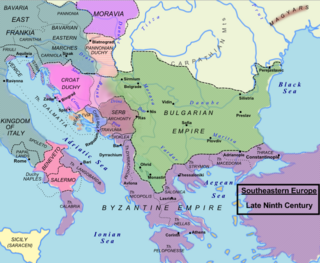
Year 836 (DCCCXXXVI) was a leap year starting on Saturday of the Julian calendar, the 836th year of the Common Era (CE) and Anno Domini (AD) designations, the 836th year of the 1st millennium, the 36th year of the 9th century, and the 7th year of the 830s decade.

Year 1246 (MCCXLVI) was a common year starting on Monday of the Julian calendar.
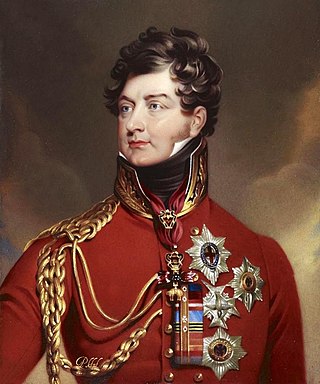
A prince regent or princess regent is a prince or princess who, due to their position in the line of succession, rules a monarchy as regent in the stead of a monarch, e.g., as a result of the sovereign's incapacity or absence.
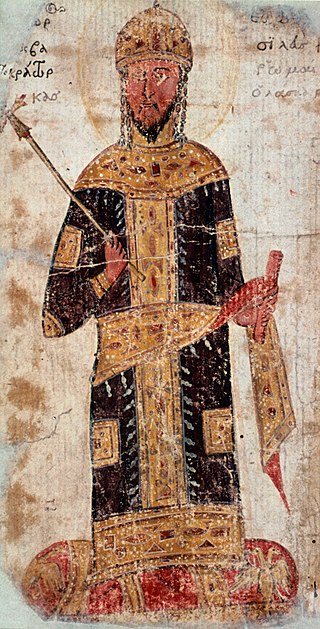
Theodore II Doukas Laskaris or Ducas Lascaris was Emperor of Nicaea from 1254 to 1258. He was the only child of Emperor John III Doukas Vatatzes and Empress Irene Laskarina. His mother was the eldest daughter of Theodore I Laskaris, who had established the Empire of Nicaea as a successor state to the Byzantine Empire in Asia Minor after the crusaders captured the Byzantine capital, Constantinople, during the Fourth Crusade in 1204. Theodore received an excellent education from two renowned scholars, Nikephoros Blemmydes and George Akropolites. He made friends with young intellectuals, especially with a page of low birth, George Mouzalon. Theodore began to write treatises on theological, historical and philosophical themes in his youth.
The Regency Acts are Acts of the Parliament of the United Kingdom passed at various times, to provide a regent in the event of the reigning monarch being incapacitated or a minor. Prior to 1937, Regency Acts were passed only when necessary to deal with a specific situation. In 1937, the Regency Act 1937 made general provision for a regent, and established the office of Counsellor of State, a number of whom would act on the monarch's behalf when the monarch was temporarily absent from the realm or experiencing an illness that did not amount to legal incapacity. This Act, as modified by the Regency Acts of 1943 and 1953, forms the main law relating to regency in the United Kingdom today.
Kaliman Asen I, also known as Coloman Asen I or Koloman was Emperor (Tsar) of Bulgaria from 1241 to 1246. He was the son of Ivan Asen II of Bulgaria and Anna Maria of Hungary. He was only seven when he succeeded his father in 1241. In the following years, the Mongols invaded Bulgaria and imposed a yearly tax on the country. He may have been poisoned, according to contemporaneous rumors about his death.

Michael II Asen was emperor (tsar) of Bulgaria from 1246 to 1256 or 1257. He was the son of Ivan Asen II and Irene Komnene Doukaina. He succeeded his half-brother, Kaliman I Asen. His mother or other relative must have ruled Bulgaria during his minority.

Theodore Komnenos Doukas was the ruler of Epirus and Thessaly from 1215 to 1230 and of Thessalonica and most of Macedonia and western Thrace from 1224 to 1230. He was also the power behind the rule of his sons John and Demetrios over Thessalonica in 1237–1246.
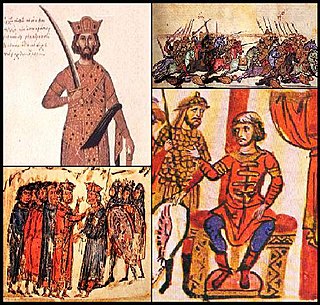
The Byzantine–Bulgarian wars were a series of conflicts fought between the Byzantine Empire and Bulgaria which began after the Bulgars conquered parts of the Balkan peninsula after 680 AD. The Byzantine and First Bulgarian Empire continued to clash over the next century with variable success, until the Bulgarians, led by Krum, inflicted a series of crushing defeats on the Byzantines. After Krum died in 814, his son Omurtag negotiated a thirty-year peace treaty. Simeon I had multiple successful campaigns against the Byzantines during his rule from 893 to 927. His son Peter I negotiated another long-lasting peace treaty. His rule was followed by a period of decline of the Bulgarian state.
Regencies in Egypt date back to Pharaonic times. Throughout Egypt's long history, there have been several instances of regents assuming power due to the reigning monarch's minority, physical illness or poor mental health. There have also been several cases of coregencies where two monarchs ruled simultaneously.
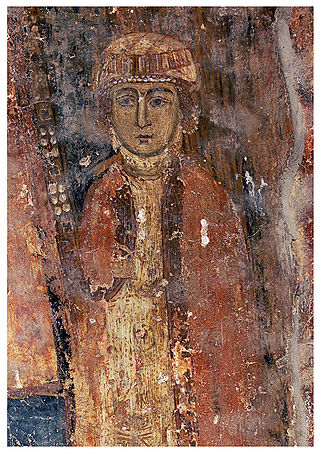
Irene Komnene Doukaina or Eirene Komnene Doukaina was an Empress of Bulgaria during the Second Bulgarian Empire and Byzantine princess. She was the third wife of tsar Ivan Asen II of Bulgaria. She was the mother of tsar Michael Asen I of Bulgaria.
Maria Palaiologina Kantakouzene was an Empress consort of Bulgaria by marriage to two Bulgarian emperors, Constantine Tikh and Ivaylo. She was a niece of Michael VIII Palaiologos.
Viola, Duchess of Opole, also known as Veleslava, Polish: Wencisława-Wiola; was a Duchess consort of Opole-Racibórz through her marriage to Casimir I.
Isbul was the kavhan, or first minister, of the First Bulgarian Empire during the reigns of Omurtag, Malamir and Presian I. Appointed to the kavhan office under Omurtag, Isbul was a regent or co-ruler of the underage Malamir and his successor Presian.
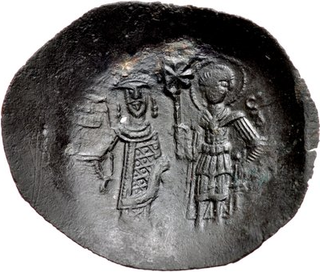
Ivan Asen II, also known as John Asen II, was Emperor (Tsar) of Bulgaria from 1218 to 1241. He was still a child when his father Ivan Asen I – one of the founders of the Second Bulgarian Empire – was killed in 1196. His supporters tried to secure the throne for him after his uncle, Kaloyan, was murdered in 1207, but Kaloyan's other nephew, Boril, overcame them. Ivan Asen fled from Bulgaria and settled in the Rus' principalities.

In a monarchy, a regent is a person appointed to govern a state pro tempore because the monarch is a minor, absent, incapacitated or unable to discharge the powers and duties of the monarchy, or the throne is vacant and the new monarch has not yet been determined. One variation is in the Monarchy of Liechtenstein, where a competent monarch may choose to assign regency to their of-age heir, handing over the majority of their responsibilities to prepare the heir for future succession. The rule of a regent or regents is called a regency. A regent or regency council may be formed ad hoc or in accordance with a constitutional rule. Regent is sometimes a formal title granted to a monarch's most trusted advisor or personal assistant. If the regent is holding their position due to their position in the line of succession, the compound term prince regent is often used; if the regent of a minor is their mother, and she is wife or widow of the king, she would be referred to as queen regent.
Joachim I was the Patriarch of the Bulgarian Orthodox Church between 1235 and 1246. He was the first head of the restored Bulgarian Patriarchate with seat in Tarnovo, the capital of the Second Bulgarian Empire. Joachim I died of natural death on 18 January 1246 and was proclaimed a saint. He was the founder of an extensive monastic complex known as the Rock-hewn Churches of Ivanovo, now included in the UNESCO World Heritage List.















